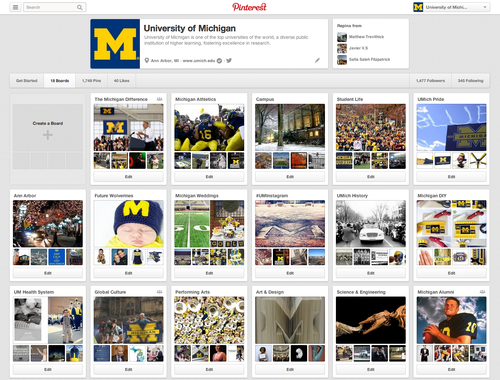
You may have read online this week that Pinterest has officially launched their analytics for business accounts. This is a free service for any Pinterest user with a business account, which means your account must be verified by a web URL (you can do this simply by pasting a code onto your homepage or blog, and it displays a small checkmark next to your name), and “registered.” If you have an existing verified Pinterest account that is NOT a business account, never fear! You can simply convert your existing account and then will be able to access the analytics.
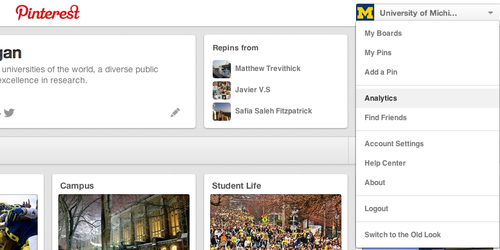
Once you’re in, it’s an easy to read, easy to export series of graphs representing your content.
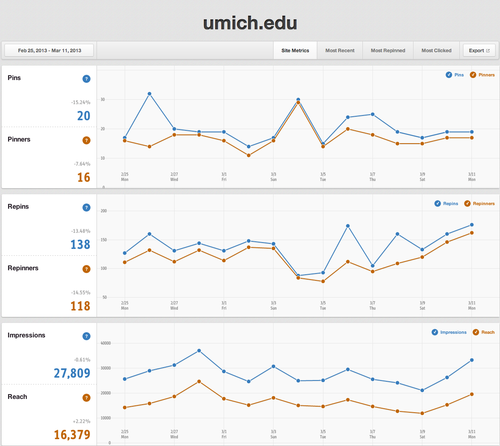
From top to bottom, the terms represent:
- Pins: Daily amount of pins that have sourced from your webpage (eg. umich.edu)
- Pinners: Daily amount of pinners who have pinned from your webpage
- Repins: Daily average number of times a pin from your webpage was repinned
- Repinners: Daily average number of pinners who have repinned a pin from your webpage
- Impressions: Daily number of times your pins appeared on Pinterest’s main feed, search results, or boards
- Reach: Daily number of potential people who saw your pins on Pinterest
- Clicks: Daily number of clicks on your webpage that came from Pinterest
- Visitors: Daily number of people who visited your webpage from Pinterest
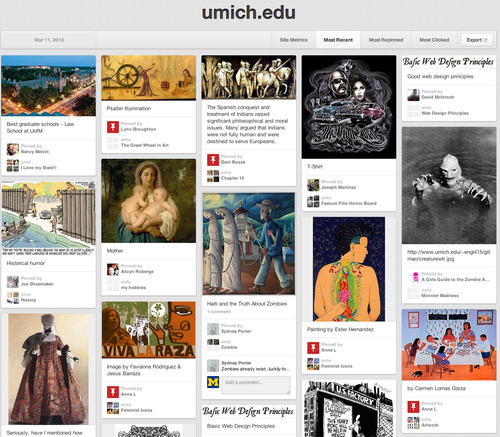
In the next tab, you will see the most recent Pins that any Pinterest user has Pinned from your webpage.
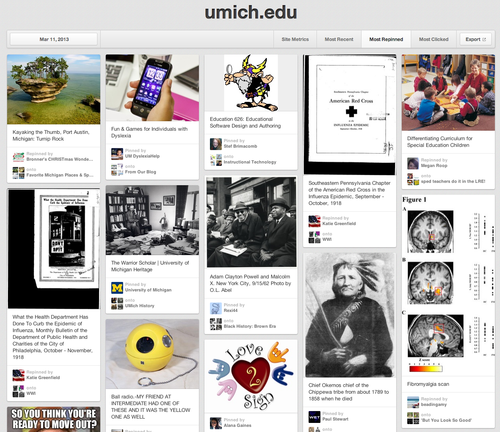
Continuing on, the next tab represents the most Repinned content from your webpage on Pinterest.
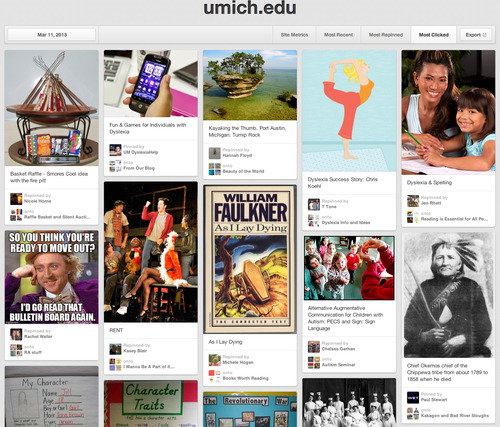
The final tab shows the Pins from your webpage with the most click-throughs. All of these tabs are exportable to Excel, which will show raw data.
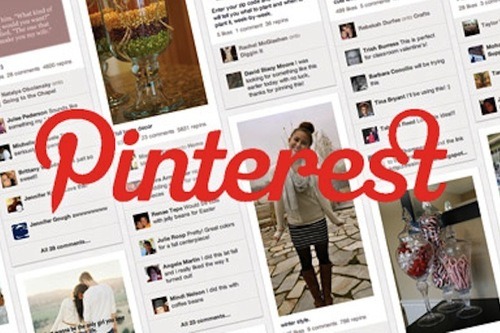
What does all of this mean?
Now that brands and marketers are able to see how their content and webpages are performing on Pinterest, we can only hope to expect better content. Smart brands can see what users pin from their webpages, what they click, and produce content that lines up with that. In turn, we should expect to see more active brands on Pinterest, creating more content instead of simply Repinning, which is the majority of the current Pinterest content. However, brands must be wary in posting content, as a pinboard represents a fine line between brand and follower, allowing the brands to humanize themselves for the viewer and show they appreciate more than just selling a product. With these new tools, brands and marketers have the opportunity to appeal to a greater audience and curate their image to maximum exposure.

We discovered that this site of Wallenberg’s story was one of the most Repinned articles from our page on Tuesday, proving that while many of our followers love Block Ms and Michigan Football, they also love UMich History, and hearing of those that made a difference at our University. For those followers, we have a UMich History and Michigan Difference board, and now know to continue to pin content from our sites to these boards.


